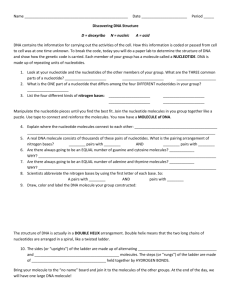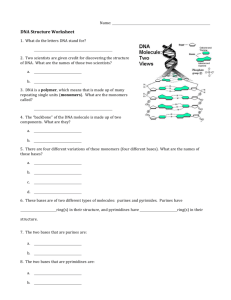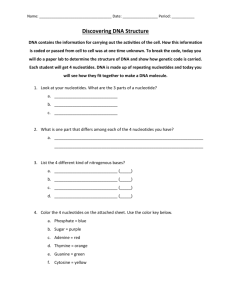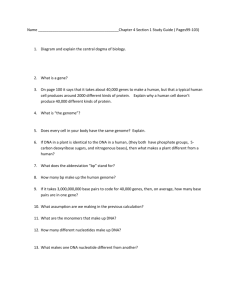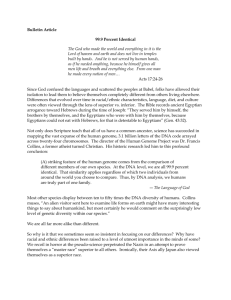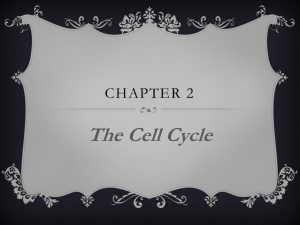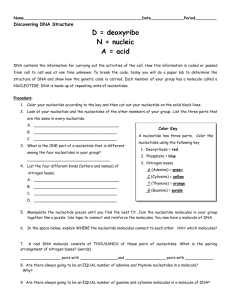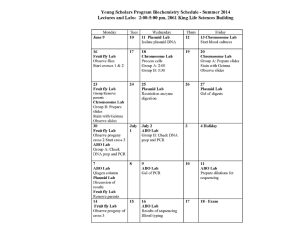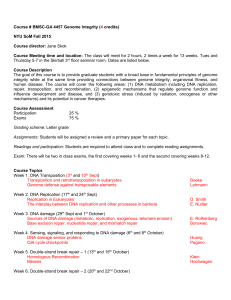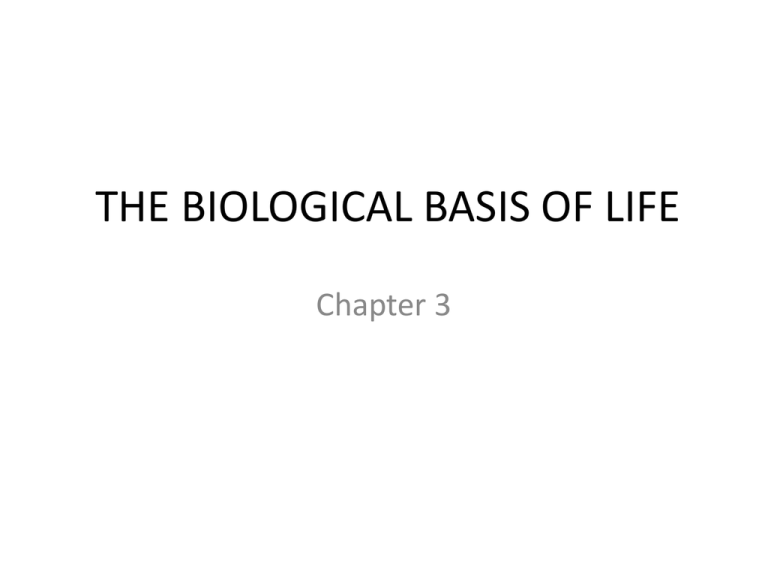
THE BIOLOGICAL BASIS OF LIFE
Chapter 3
Human Genome Project
• In 1990 an effort began to sequence the entire
human genome, which consists of some 3
billion bases comprising approximately 25,000
to 30,000 genes.
• The goal was achieved in 2003.
• Scientists are still several years away from
identifying the functions of many of the
proteins produced by these genes.
Human…Neanderthal? Genome
Project
The Neanderthal Genome has been sequenced.
Svante Paabo and a Neanderthal skull
Read the press release from the Max Planck
Society here
Evolutionary significance
• Tiny differences in protein-coding sequences
may explain why humans are susceptible to
diseases like cholera, malaria, and influenza
while chimpanzees apparently are not.
Genetics
• The study of gene structure and action, and
the patterns of inheritance of traits from
parent to offspring.
• Genetic mechanisms are the foundation for
evolutionary change.
Human Genome
Project
Overview of
Genetics
The Cell
Cells are the basic
units of life in all living
organisms.
In some forms, such
as bacteria, a single
cell constitutes the
entire organism.
Complex life forms
(multicellular), such
as plants and animals,
are made up of
billions of cells.
Cells
Life on earth can be traced back 3.7 billion years to single
celled organisms, such as bacteria and blue-green algae.
Eukaryotic cells, structurally complex cells, appeared 1.2
billion years ago.
A three-dimensional structure composed of carbohydrates,
lipids (fats), nucleic acids, and proteins
Cells
• Somatic cells – celllular components of body tissues, such as
muscle, bone, skin, nerve, heart, and brain
• Gametes – sex cells involved in reproduction and not
important as structural components of the body
– Egg cells produced in female ovaries
– Sperm cells produced n male testes
– Zygote – union of sex cells to form the potential of
developing into a new individual; in this way
gametes transmit genetic information from parent
to offspring.
Structure of a Generalized Eukaryotic
Cell
DNA Structure
• For a cell to work, it needs DNA to direct it.
• An organism’s inheritance depends on the
structure and function of DNA.
• DNA is composed of two chains of
nucleotides, comprising a double strand or
double helix.
• A nucleotide consists of a sugar, a phosphate,
and one of four nitrogenous bases…
Part of a DNA Molecule
DNA Structure
• Nucleotides form long chains.
• The two chains are held together by bonds
formed on their bases with their complement
on the other chain.
– Guanine(G) is the complement of Cytosine(C)
– Adenine (A) is the complement of Thymine(T)
The DNA Molecule
• James Watson (left)
and Francis Crick in
1953 with their
model of the
structure of the DNA
molecule.
DNA Replication
• Cells multiply by dividing, making exact copies
of themselves and enabling organisms to grow
and injured tissues to heal.
• Inside the cell, the DNA must replicate itself
first before the cell can split apart.
Enzymes
• Replication begins
when enzymes break
the bonds between
bases throughout the
DNA molecule,
separating two
previously joined
strands of nucleotides
and leaving their
bases exposed…
Enzyme
The DNA Replication Process
1.
3.
Enzymes break
the bonds
between the
DNA molecule,
creating two
nucleotide
chains that need
complementary
nucleotides.
Unattached
nucleotides pair
with the
appropriate
complementary
nucleotide.


